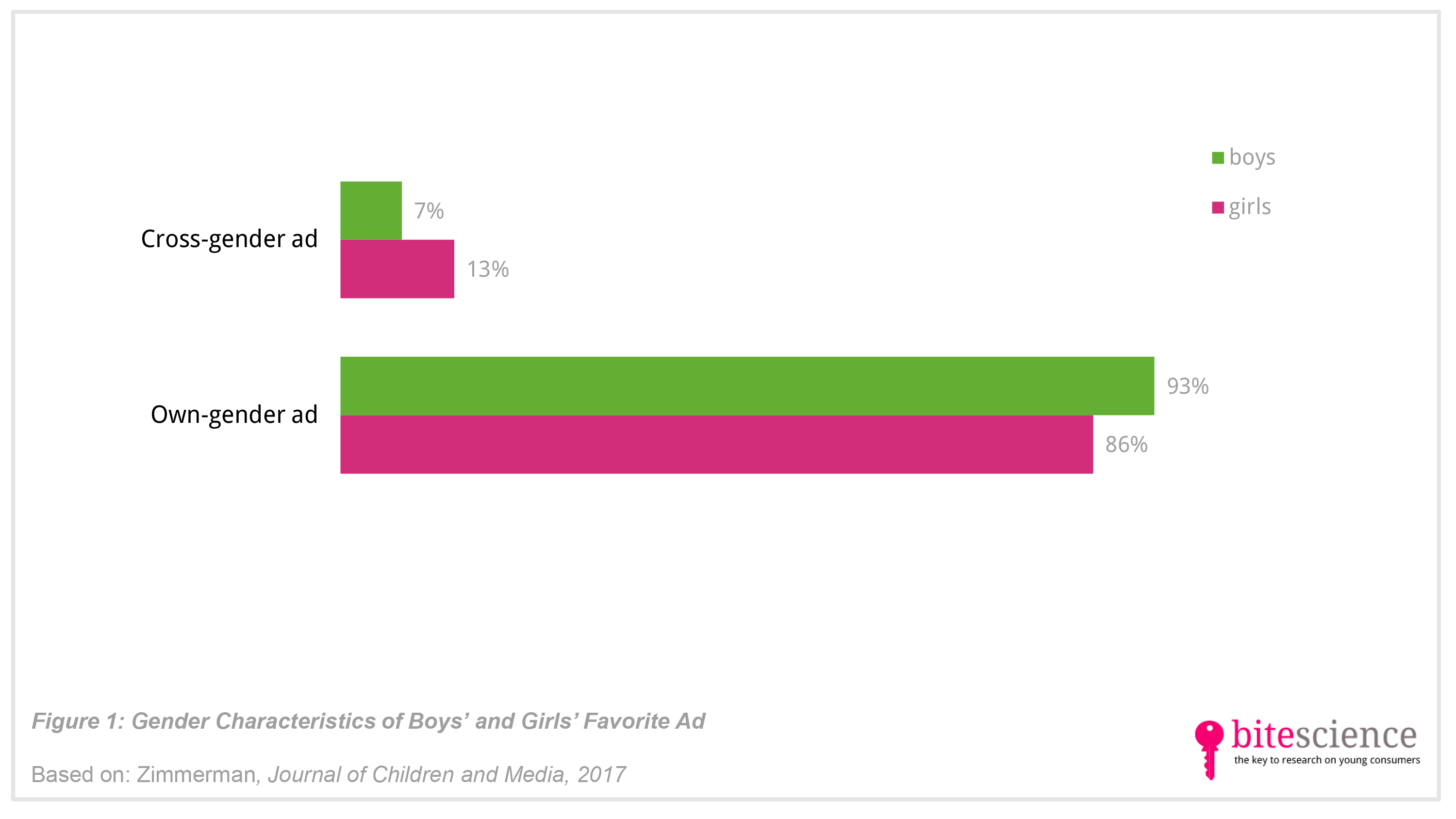
Stereotypical? Boys Like Own-Gender Ads More Than Girls Do
A study in Journal of Children and Media shows that boys perceive ads in a more stereotypical way than girls. Compared to girls, boys prefer and attend to own-gender targeted ads more. Also, boys dislike female-targeted ads more than girls dislike male-targeted ads. When boys become older, they like own-targeted ads and dislike female-targeted ads even more.
Take aways
- Boys and girls show more positive emotions (e.g., smile more) when watching ads that are targeted to their own gender.
- When boys and girls have to pick a favorite ad, they choose an own-gender ad.
- Compared to girls, boys prefer and attend to ads that are targeted to their own gender more. This indicates that boys respond to ads in a more stereotypical way than girls.
- Older boys like female-targeted ads even less than younger boys, showing that the gender-typed preferences of boys become more rigid over time.
- Because parents can still modify and shape their children's stereotypical preferences, they should know that boys (3-6 years) have more rigid stereotypical preferences than girls.
Study information
The question?
How do preschoolers perceive gender stereotypical ads?
Who?
60 children aged 3 to 6 years (mean age: 3.93 years; 48% girls). The big majority (95%) was Caucasian. 81% of the primary caregivers was married and 76% had a household income of $50,000 or more.
Where?
Northern Virginia, United States
How?
The experimenters recruited children via two local childcare centers in Northern Virginia. This resulted in 12 same-gender (six girl groups and six boy groups) and 16 mixed-gender groups.
In Fall 2012 and Spring 2013, trained experimenters conducted the interviews. First, the children were asked how old they were, if and when they watched television and what their favorite show was. The experimenter also asked if they knew what a commercial was. If not, the following definition was given (“commercials are what you see between shows- they tell you about different things that you can buy like toys and food”).
Then the children watched all five toy advertisements (two male-targeted, two female-targeted and one neutral). The stereotypical male-targeted ads showed male toys, had male characters and a male narrator. Also, these two ads focused on competition and aggression. In contrast, the stereotypical ads targeted to girls advertised female toys, had a female narrator and female characters. Also, they focused on cooperation rather than competition and aggression. The neutral ad was about an artistic toy for both boys and girls and focused on action.
After watching each ad children had to indicate whether the toy was for girls, boys or both and why, which indicated their stereotypical flexibility. They also indicated whether they liked the ad. Afterwards, the children saw pictures of the five ads, and they had to indicate their favorite ad.
During each commercial, children’s attention to the ads were observed and recorded. Also, children’s emotion (positive/neutral/negative) while watching the ads was observed.
Facts and findings
- When asked whether the ad was for girls, boys or both, 85% of the children classified at least one ad in a stereotypical way (e.g., classifying a female-targeted ad for girls). However, a minority gave only stereotypical responses (20%) or only nonstereotypical responses (15%). So, most children still gave a mix of stereotypical and nonstereotypical responses, which indicated stereotypical flexibility.
- Children also gave an explanation of why they classified an ad into a certain gender category. The most frequent reason was gender-related, which means that the ad was about ‘girl stuff’ or ‘boy stuff’ (43%). Other reasons were: because the toy was something boys, girls or both would like to play with (25%), because of the gender of the characters in the ad (23%), or because they personally liked and wanted the toy (30%) Also, 10% said that some of the commercials were for both boys and girls, because they shared the item with an opposite-gender sibling or friend.
- Children’s emotional responses to the ads were similar for both boys and girls. They both smiled more when watching ads that were targeted to their own gender, followed by the neutral ad and the opposite-gender ad.
- See figure 1, after children had seen all 5 ads, they had to choose one favorite ad. Most boys (93%) and girls (86%) chose an ad that was targeted to their own gender. Only 7% of the boys and 13% of the girls chose a cross-gender ad as their favorite. Moreover, most children chose their favorite ad based on gender-related reasons (68%), the other 34% indicated to have chosen their favorite ad based on whether they liked it.
- After seeing each individual ad, children had to indicate whether they liked it. Boys preferred and liked male- and neutral targeted ads the most and girls did not show this own-gender ad preference. This means that boys responded in a more stereotypical way than girls.
- Boys also paid more attention to male-targeted ads than to neutral and female ads. For girls, this did not differ across the ads.
- Older boys were even more likely to respond to ads in a stereotypical manner. They were also more likely to dislike the female-targeted ads. Such an effect was not found for girls.
